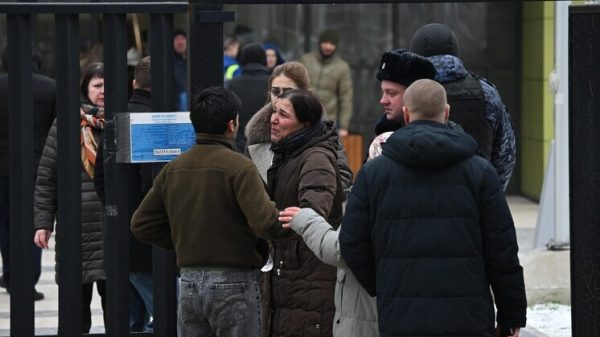
Millions of people were uprooted from their homes by conflict, violence and natural disasters in the first six months of this year, research has found.
Nearly 15m new internal displacements were recorded in more than 120 countries between January and June by the Swiss-based Internal Displacement Monitoring Centre (IDMC).
Cyclones, floods, bushfires and locust infestations – among other natural disasters – accounted for the vast majority, or 9.8m displacements, according to a report published on Wednesday.
Conflict and violence, primarily in Syria, the Democratic Republic of the Congo and Burkina Faso, accounted for another 4.8m displacements, the IDMC found.
Record 50 million people internally displaced in 2019, study finds
Read more
An estimated 50.8 million individuals were living as internally displaced people (IDPs) by the end of 2019. Many millions more are likely to be forced from their homes in the coming months due to extreme weather and ongoing violence, the report warns.
“The staggering figures recorded in the first six months of the year are testament to the persistent volatility of displacement crises worldwide,” said IDMC director Alexandra Bilak.
“Compounding this is the Covid-19 pandemic, which has reduced access to healthcare and increased economic hardship and protection risks for displaced communities.”
Conflict and violence accounted for 4.8m new internal displacements, primarily in Africa and the Middle East, a million more than in the first half of 2019, the IDMC found.

Renewed activity by the Syrian military in Idlib in the first three months of the year triggered the most significant displacement in the country since war broke out in 2011, with some 1.5m new displacements by the end of June, according to the report. An additional 1.4m displacements were recorded in DRC and another 419,000 in Burkina Faso, where fighting among criminal gangs, jihadists and local militias has plunged much of the nation into crisis.
In terms of numbers alone, Cyclone Amphan accounted for the largest single displacement event in the first half of 2020, triggering 3.3m pre-emptive evacuations in India and Bangladesh, the IDMC found. A number of countries in east Africa suffered major floods and a locust infestation that further destabilised regional food security, while in Australia, catastrophic bushfires led to the displacement of tens of thousands of people.
Yet many of those living in areas exposed to disasters expressed reluctance to leave their homes for fear of contracting Covid-19 in evacuation centres, the report claims.
Jan Egeland of the Norwegian Refugee Council warned that many millions more people could face displacement in coming months as weather systems intensify, and that IDP figures are likely to rise significantly by the end of the year.
“We expect even more people to be displaced in the second half of the year compared to the first, because many of the weather-related hazards like tropical storms and monsoon rains are still to come,” he said.
“It’s clear that many governments cannot shoulder the burden of such high numbers of displaced people alone. They don’t have the resources of wealthier countries to provide these social safety nets. This is why we are calling for action by the G20, that are now spending trillions on their own economies, to support the most vulnerable.”





















































Свежие комментарии